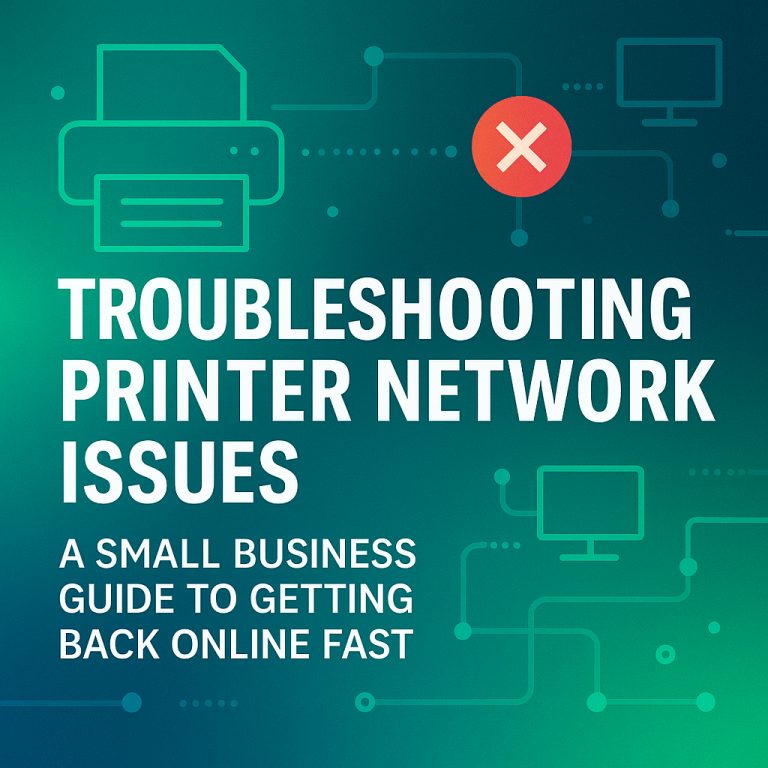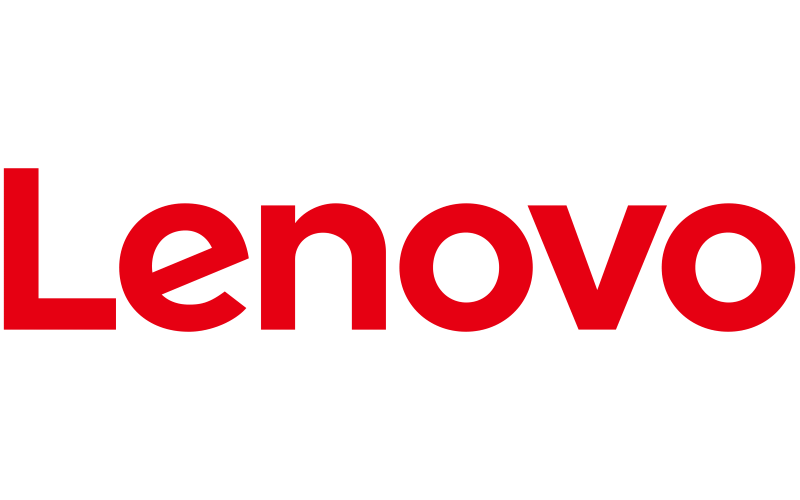Are you considering moving to the cloud but feeling overwhelmed by the complexity of the cloud migration process? You’re not alone. Many organizations recognize the benefits of cloud computing but struggle with developing a comprehensive cloud migration strategy and executing their migration project successfully. That’s where cloud migration service providers come in – they can simplify your journey to the cloud and ensure a smooth transition.
Cloud migration services companies offer a range of solutions to help you navigate the challenges of migrating to the cloud. From assessing your current infrastructure and applications to designing a tailored migration plan and providing ongoing support, these providers have the expertise and experience to guide you through each step of your cloud migration project. In this article, we’ll explore the key considerations when choosing between different cloud migration approaches, platforms, and service providers to help you make informed decisions for your organization’s unique needs.
Rehosting vs Replatforming
When deciding between rehosting and replatforming for your cloud migration journey, it’s essential to understand the key differences between these two strategies. Rehosting, also known as lift-and-shift migration, involves transferring your workloads to the cloud without significant modifications. This approach is typically fast and poses little resistance, especially when using export tools and migration services.
On the other hand, replatforming involves optimizing your applications or workloads as part of the migration process. By pursuing replatforming, you can take advantage of cloud-native benefits such as auto-scaling, elastic database infrastructure, and infrastructure as code. However, this approach requires more time and effort compared to rehosting.
Definition and Characteristics
Rehosting is characterized by directly migrating workloads into the cloud without significant changes to system architecture or code. This enables quick migration with minimal disruption, as long as the deployment is properly configured and mapped to new resources.
Replatforming, in contrast, includes cloud optimization as part of the migration strategy. It involves making modifications to the application to leverage cloud capabilities while moving to the cloud environment.
Pros and Cons
The primary advantage of rehosting is a smooth and quick migration process, making it an ideal choice for accelerated timelines. However, it may not fully utilize cloud benefits, and organizations need to be cautious about overprovisioning and overspending.
Replatforming allows you to optimize application performance and scalability for the cloud. It can reduce the risk of migration failures caused by a one-size-fits-all approach. Nevertheless, replatforming can be time-consuming and technically challenging, especially for teams unfamiliar with cloud infrastructure.
When to Use Each
Consider rehosting when you need to migrate quickly with minimal changes, or when your applications can operate with comparable efficiency in both on-premises and cloud environments.
Opt for replatforming when you want to optimize your applications for the cloud during migration, particularly if the changes could lead to high business value or are unavoidable in the long run. However, be sure to clearly define the scope of the replatforming project to avoid scope creep.
Ultimately, the choice between rehosting and replatforming depends on your organization’s specific needs, timeline, and resources. Careful consideration of the pros and cons, along with a well-defined migration strategy, will help you make the best decision for your cloud migration project. By partnering with experienced cloud migration service providers like Exodata, you can simplify your move to the cloud and ensure a successful transition.
Public Cloud vs Private Cloud
When deciding between public and private cloud for your cloud migration journey, it’s crucial to understand the key differences in terms of cost, security, and scalability. Public clouds, offered by providers like AWS, Azure, and Google Cloud, deliver computing resources over the internet, while private clouds are dedicated to a single organization and can be hosted either on-premises or by a third-party provider.
Cost Implications
Public clouds typically operate on a pay-as-you-go model, allowing you to pay only for the resources you use. This can be cost-effective for businesses with fluctuating demands or those looking to avoid substantial upfront investments. However, as your usage grows, public cloud costs can quickly escalate, sometimes exceeding the cost of running an equivalent private cloud.
On the other hand, private clouds require an initial investment in hardware and infrastructure, which can be a significant capital expense (CapEx). However, over time, the operational expenses (OpEx) of a private cloud can be lower than public cloud costs, especially for organizations with steady, predictable workloads. In fact, some companies have reported saving up to 90% on cloud spending by moving to a private cloud.
Security Considerations
Security is often a primary concern when choosing between public and private clouds. Private clouds offer greater control over security measures, as the infrastructure is dedicated to a single organization. This can be particularly important for businesses operating in highly regulated industries or those with specific compliance requirements.
Public clouds, while generally secure, involve sharing infrastructure with other customers, which may raise concerns for some organizations. However, leading public cloud providers invest heavily in security and often have more resources dedicated to protecting their infrastructure than many individual companies.
Scalability Options
Public clouds are known for their elasticity and scalability, allowing businesses to quickly provision and scale resources as needed. This can be particularly beneficial for organizations with unpredictable or rapidly changing workload requirements.
Private clouds, while offering some level of scalability, may be more limited in their ability to scale rapidly, as additional hardware and infrastructure may need to be procured and set up. However, for businesses with more predictable workloads, a private cloud can still provide sufficient scalability.
Ultimately, the choice between public and private cloud depends on your organization’s unique requirements, including budget, security needs, and workload characteristics. Many businesses opt for a hybrid cloud approach, leveraging both public and private clouds to balance cost, security, and scalability. By partnering with experienced cloud migration service providers like Exodata, you can assess your needs and develop a tailored strategy to simplify your move to the cloud.
AWS vs Azure vs Google Cloud
When evaluating the top three cloud providers—AWS, Azure, and Google Cloud—for your cloud migration project, it’s essential to compare their service offerings, pricing models, and performance metrics to make an informed decision.
Service Offerings
All three providers offer a wide range of services, including compute, storage, networking, and more. AWS has the most diverse selection of services, with over 200 offerings. Azure follows closely with a comprehensive set of services, particularly in AI, ML, and analytics. Google Cloud, while having a smaller catalog, provides around 100 services, including robust tools for advanced workloads like machine learning and data visualization.
Pricing Models
Each provider has unique pricing structures:
- AWS offers on-demand, reserved, and spot instances, allowing you to optimize costs based on your workload requirements.
- Azure provides pay-as-you-go and reserved instance options, with discounts for long-term commitments.
- Google Cloud follows a pay-per-second model, with sustained use discounts and committed use discounts available.
It’s crucial to evaluate your specific needs and usage patterns to determine which pricing model will be most cost-effective for your organization.
Performance Metrics
Independent benchmarks, such as the 2022 Cloud Report from CockroachLabs, provide insights into the performance of AWS, Azure, and Google Cloud:
- Google Cloud instances occupied 6 out of the top 10 spots in price-for-performance rankings.
- AWS generally offers the most affordable cloud storage pricing and the fastest network throughput.
- Azure provides excellent compute power and scalability, particularly for Windows-centric organizations.
Ultimately, the best cloud provider for your migration project will depend on your specific requirements, budget, and performance needs. By partnering with experienced cloud migration service providers like Exodata, you can navigate the complexities of evaluating AWS, Azure, and Google Cloud to select the optimal platform for your organization’s success.
Lift-and-Shift vs Refactoring
When deciding between lift-and-shift and refactoring for your cloud migration project, it’s crucial to understand the key differences between these two approaches and their potential impact on your organization.
Methodologies Explained
Lift-and-shift, also known as rehosting, involves moving applications to the cloud without making significant changes to the system architecture or code. This approach enables quick migration with minimal disruption, as long as the deployment is properly configured and mapped to new resources.
Refactoring, on the other hand, involves modifying the application code to leverage cloud-native services and architectures. While this approach requires more development effort, it delivers better scalability, performance, and cost optimization.
Implementation Challenges
Lift-and-shift migrations may perpetuate legacy architectures and code inefficiencies, leading to increased technical debt. Without proper planning and assessment, there’s a risk of underestimating the complexity of migration, resulting in extended downtime or disruptions to business operations.
Refactoring projects can be time-consuming and resource-intensive, requiring advanced coding, automation, and DevOps skills. The risk of errors at the code, configuration, and infrastructure level is high, potentially causing delays, cost escalations, and possible outages.
Business Impact
Lift-and-shift offers a fast and low-cost migration option with minimal disruption, making it ideal for legacy applications or quick wins. However, it may not fully leverage cloud benefits and can lead to higher long-term costs due to inefficiencies.
Refactoring allows applications to take advantage of cloud-native features, leading to long-term cost savings, increased resilience, and the ability to adapt to changing requirements. However, the process is more complex and time-consuming, and can result in vendor lock-in.
Ultimately, the choice between lift-and-shift and refactoring depends on your organization’s specific needs, timeline, and resources. By partnering with experienced cloud migration service providers like Exodata, you can assess your requirements and develop a tailored strategy to ensure a successful transition to the cloud.
Hybrid Cloud vs Multi-Cloud
When comparing hybrid cloud and multi-cloud solutions, it’s essential to understand their key differences in terms of architecture, pricing, availability, data storage, security, and flexibility.
Architecture
The fundamental difference between hybrid and multi-cloud lies in their architecture. A hybrid cloud environment combines private and public cloud services, while a multi-cloud model utilizes two or more public cloud services.
Hybrid cloud users own and manage a private cloud resource as part of their cloud infrastructure, usually hosted on-premises or in dedicated servers at third-party data centers. This private aspect integrates with public cloud workloads to create an overall business solution. In contrast, multi-cloud systems rely solely on public cloud services.
Pricing
Companies employing a hybrid cloud model often incur higher costs, especially when the private cloud resource is hosted on-premises, requiring purchase, management, and maintenance of that resource.
Multi-cloud solutions using public cloud resources are more cost-effective to deploy and maintain, as they do not require the initial investment in private infrastructure. By leveraging the massive buying power of public cloud vendors, multi-cloud users gain access to leading technology at a more affordable cost.
Availability
Multi-cloud environments are designed for high availability, with service levels and guarantees from large cloud vendors ensuring business-critical uptime for public cloud resources. If one resource fails, it can seamlessly switch to another.
In a hybrid cloud setup, the private resource has some degree of management from the owner. If the private resource goes down, it requires maintenance and may cause significant downtime without a backup resource available.
Data Storage
One of the most significant benefits of hybrid cloud computing is the ability to operate data storage through the private cloud resource, often used for critical, regulated, or sensitive data. This can then connect to public resources handling less-sensitive tasks.
Data storage in a hybrid cloud offers compliance for critical data but is usually a finite resource with uptime and disaster recovery concerns. A multi-cloud solution, on the other hand, provides nearly infinite storage space, backups, and disaster recovery possibilities.
Security
Hybrid cloud benefits include companies controlling who can physically access their private cloud hardware, which can be desirable in highly regulated industries. With multi-cloud solutions, companies do not control physical infrastructure access, although it is typically protected by robust security layers.
Multi-cloud solutions offer cutting-edge online security, with state-of-the-art systems simplifying the configuration and management of automation, access controls, encryption, and general security. In a hybrid environment, the company is responsible for configuring and controlling online access to its private cloud resource.
Flexibility
Multi-cloud solutions excel in flexibility, allowing businesses to choose the exact resources they need from the ideal provider for each task. While hybrid cloud users can select their public cloud service provider, they have more limitations with their private cloud resource.
Multi-cloud architecture also enables companies to scale as needed, quickly deploying additional resources without vendor lock-in. A hybrid cloud resource may have configurations or requirements that limit choices or impact cloud migration.
By partnering with experienced cloud migration service providers like Exodata, you can navigate the complexities of hybrid cloud and multi-cloud solutions, ensuring a successful transition to the cloud that aligns with your organization’s unique needs and goals. Contact Exodata today to simplify your move to the cloud.
In-House Migration vs Third-Party Services
When considering a cloud migration project, organizations face a crucial decision: whether to handle the migration in-house or partner with a third-party cloud migration service provider. Both approaches have their merits and challenges, and the choice ultimately depends on factors such as available resources, expertise, and project complexity.
Pros and Cons of DIY Approach
Taking on a cloud migration project in-house can provide organizations with complete control over the process and allow them to tailor the migration to their specific needs. However, this approach also comes with significant challenges:
- In-house teams may lack the necessary expertise and experience to handle complex migration scenarios, leading to prolonged timelines and potential missteps.
- The organization must allocate dedicated resources to the migration project, which can strain existing IT teams and divert attention from other critical tasks.
- The cost of training staff, acquiring new tools, and addressing unforeseen issues can quickly escalate, making the DIY approach more expensive than initially anticipated.
Benefits of Using Experts
Partnering with a cloud migration service provider offers several key advantages:
- Experienced providers bring a wealth of knowledge and best practices to the project, ensuring a smooth and efficient migration process.
- Third-party experts can help organizations navigate complex technical challenges and provide guidance on optimizing their cloud environment for performance, security, and cost-effectiveness.
- By leveraging a provider’s expertise and resources, organizations can accelerate their migration timeline and minimize disruption to their day-to-day operations.
Cost Comparison
While it may seem more cost-effective to handle a migration in-house, the long-term costs can often be higher than partnering with a third-party provider. Consider the following:
- In-house migrations require significant investments in staff training, tools, and infrastructure, which can quickly add up.
- Inexperienced teams may make costly mistakes or overlook critical aspects of the migration, leading to budget overruns and extended timelines.
- Cloud migration service providers often offer flexible pricing models and can help organizations optimize their cloud spend, resulting in long-term cost savings.
Ultimately, the decision between an in-house migration and partnering with a third-party service provider depends on your organization’s unique needs and capabilities. By carefully evaluating your resources, expertise, and project requirements, you can make an informed choice that sets your cloud migration project up for success. Contact Exodata today to learn how our experienced team can simplify your move to the cloud and ensure a seamless transition.
Data Transfer Methods: Online vs Offline
When migrating data to the cloud, organizations must carefully consider the data transfer methods available to them. The two primary approaches are online data transfer and offline data transfer, each with its own advantages and challenges in terms of security, speed, cost, and use case scenarios.
Security and Speed
Online data transfer involves moving data over the internet using secure protocols like Transport Layer Security (TLS) to encrypt data in transit. Services like AWS DataSync and AWS Transfer Family simplify and secure online data transfers. However, online transfers may be limited by available bandwidth, affecting transfer speeds for large datasets.
Offline data transfer methods, such as AWS Snowball devices, provide a secure way to transfer petabytes of data physically. These devices use industry-standard Trusted Platform Modules (TPM) to detect unauthorized modifications and encrypt data at rest. While offline transfers can move large volumes of data quickly, they require more time for shipping and handling.
Cost Considerations
Online data transfer is generally more cost-effective for smaller datasets or when time is not a critical factor. AWS offers services like AWS DataSync and Amazon S3 Transfer Acceleration to optimize costs and performance for online transfers.
Offline data transfer becomes more cost-effective when dealing with large datasets (petabytes) or when bandwidth limitations make online transfer infeasible. AWS Snowball devices, such as AWS Snowcone and AWS Snowball, are designed for these scenarios, helping organizations avoid high network costs associated with large-scale online transfers.
Use Case Scenarios
Online data transfer is ideal for scenarios requiring continuous data migration, such as hybrid cloud deployments or ongoing data synchronization between on-premises and cloud environments. AWS Storage Gateway and AWS DataSync enable seamless online data transfer for these use cases.
Offline data transfer is best suited for one-time or periodic large-scale data migrations, such as data center migrations or backups of large datasets. AWS Snowball devices, including AWS Snowcone and AWS Snowball, are purpose-built for these scenarios, allowing organizations to securely transfer massive volumes of data to the cloud.
Ultimately, the choice between online and offline data transfer methods depends on factors such as data volume, security requirements, transfer speed, cost considerations, and specific use case scenarios. By partnering with experienced cloud migration service providers like Exodata, organizations can assess their unique needs and select the most appropriate data transfer approach to simplify their move to the cloud. Contact Exodata today to streamline your cloud migration journey.
Small Business vs Enterprise Cloud Migration
When it comes to cloud migration, small businesses and enterprises face different challenges and considerations due to their unique characteristics and resource availability.
Unique Challenges
Small businesses often struggle with limited IT expertise and budget constraints, making it challenging to navigate the complexities of cloud migration. They may lack the in-house knowledge required to assess their current infrastructure, identify suitable cloud solutions, and execute the migration process effectively.
On the other hand, enterprises typically have larger and more complex IT environments, with a mix of legacy systems and modern applications. This complexity can make the migration process more time-consuming and resource-intensive. Enterprises also face the challenge of ensuring data security and compliance during the migration, as they often handle sensitive information and must adhere to strict regulatory requirements.
Resource Management
Resource management is a critical aspect of cloud migration, and it differs significantly between small businesses and enterprises. Small businesses often have limited financial resources, making it essential to carefully plan and optimize their cloud spending. They need to strike a balance between leveraging the benefits of the cloud and controlling costs to ensure a positive return on investment.
Enterprises, with their larger budgets, have more flexibility in terms of resource allocation. However, they must also manage their cloud resources effectively to avoid overspending and ensure optimal performance. This involves implementing proper governance, monitoring, and optimization strategies to maintain control over their cloud environment.
Tailored Strategies
To address their unique challenges and resource constraints, small businesses and enterprises require tailored cloud migration strategies. Small businesses can benefit from partnering with experienced cloud migration service providers like Exodata, who can guide them through the process and help them make informed decisions based on their specific needs and goals. These providers offer expertise, tools, and support to streamline the migration process and ensure a smooth transition to the cloud.
Enterprises, on the other hand, often have the internal resources and expertise to develop and execute their own cloud migration strategies. However, they can still benefit from collaborating with cloud migration service providers to access specialized knowledge, best practices, and tools that can accelerate their migration journey. Providers like Exodata can help enterprises navigate the complexities of large-scale migrations, optimize their cloud environment, and ensure a successful outcome.
Ultimately, whether you are a small business or an enterprise, partnering with a trusted cloud migration service provider can simplify your move to the cloud and help you achieve your business objectives. By leveraging their expertise and tailored strategies, you can overcome the unique challenges of your organization and realize the full potential of cloud computing. Contact Exodata today to discuss your cloud migration needs and embark on a successful journey to the cloud.
Conclusion
In conclusion, cloud migration is a complex process that requires careful consideration of various factors, including the choice between rehosting and replatforming, public and private cloud, different cloud providers, and data transfer methods. The unique challenges faced by small businesses and enterprises also necessitate tailored strategies to ensure a successful transition to the cloud. By partnering with experienced cloud migration service providers like Exodata, organizations can navigate these complexities and simplify their move to the cloud, ensuring a smooth and efficient migration process that aligns with their specific needs and goals.
Exodata’s team of cloud migration experts brings a wealth of knowledge and best practices to help organizations make informed decisions and optimize their cloud environment for performance, security, and cost-effectiveness. Contact us today to see how we can assist in your could migration journey. With Exodata’s guidance and support, your organization can overcome the challenges of cloud migration and unlock the full potential of cloud computing, enabling you to focus on driving business growth and innovation.
FAQs
1. What is the process of cloud migration?
Cloud migration involves transferring different aspects of an organization’s operations to the cloud. This can be executed through various strategies depending on the specific goals and needs of the organization. Common strategies include lift-and-shift (rehosting), refactoring (or re-platforming), or completely rebuilding the applications.
2. What are the “4 Rs” of cloud migration?
The “4 Rs” of cloud migration refer to four key strategies that can guide the process: Re-host, Re-platform, Re-factor/Re-architect, and Replace. Each strategy offers a different approach to cloud migration, helping organizations tailor their migration process to better fit their specific requirements.
3. Can you list the five cloud migration strategies?
Yes, the five primary cloud migration strategies are:
- Rehosting (“lift and shift”): Moving applications to the cloud without modifications.
- Replatforming: Making minimal changes to optimize applications for the cloud.
- Repurchasing: Moving to a different product that is cloud-native.
- Refactoring: Redesigning applications to fully utilize cloud capabilities.
- Retiring: Eliminating outdated or unnecessary applications.
- Retaining: Keeping certain applications or components on-premises or in their original environment.
4. What are the main advantages of moving to the cloud?
Migrating to the cloud offers several benefits, including:
- Optimized costs through more efficient resource use.
- Enhanced flexibility and scalability to meet changing demands.
- Improved security features provided by cloud providers.
- Compliance with regulatory standards facilitated by advanced cloud technologies.
- Robust backup, recovery, and failover systems to ensure data integrity and availability.
- Simplified management and monitoring of IT resources.










